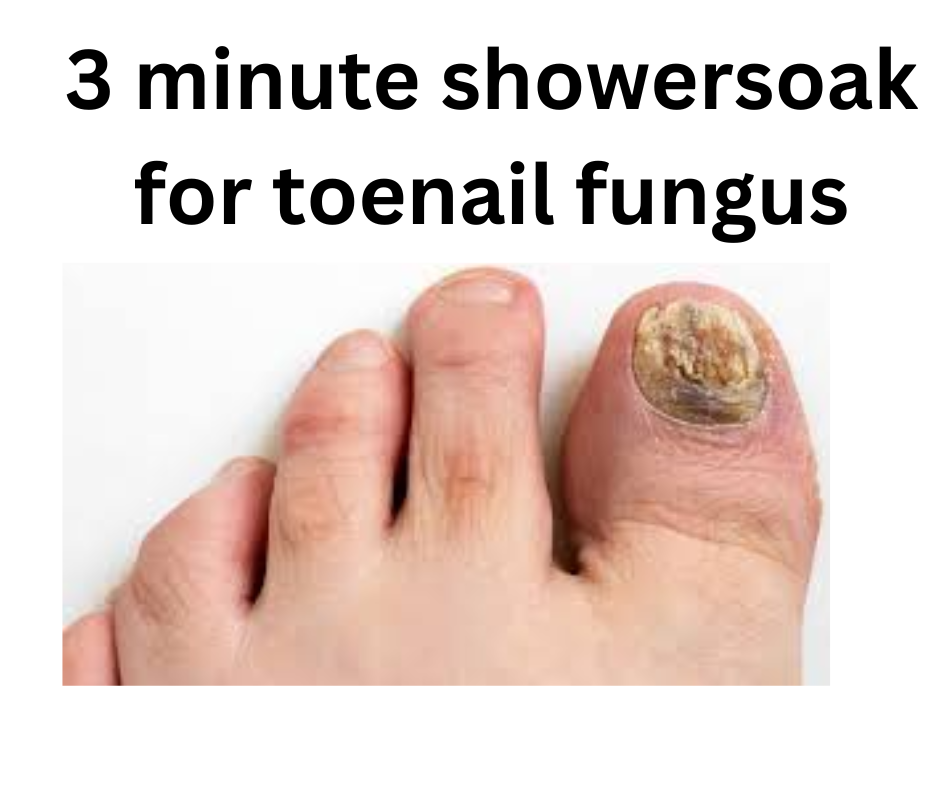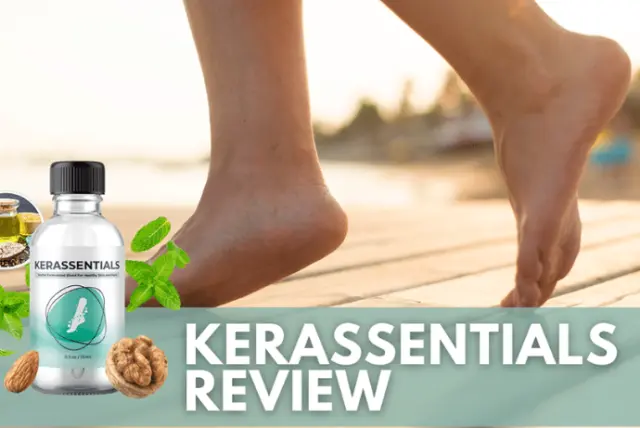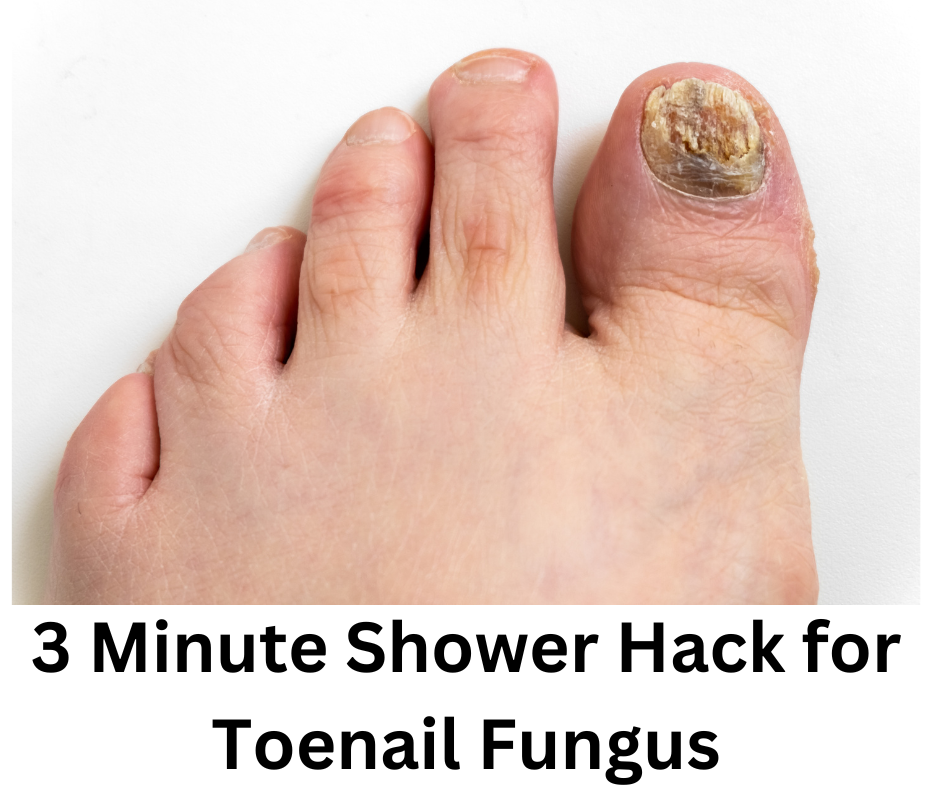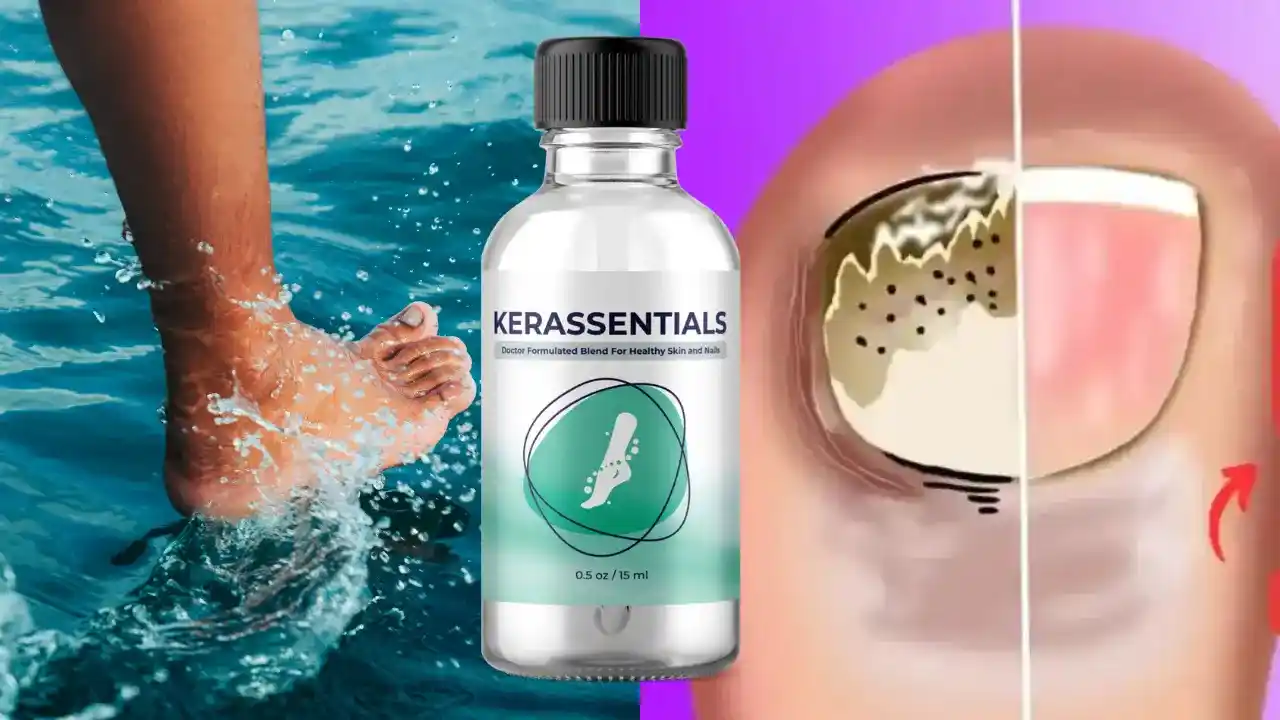3 Minute Shower Hack For Toenail Fungus Reviews

The persistent battle against toenail fungus, or onychomycosis, plagues millions, causing discoloration, thickening, and potential discomfort. Traditional treatments often involve lengthy courses of oral medications or topical applications, sometimes with limited success and potential side effects. Now, a novel approach is gaining traction online: a purported “3-minute shower hack” promising rapid relief.
But does this unconventional method, often shared on social media platforms and online forums, truly deliver on its promises? This article delves into the specifics of the “3-minute shower hack,” examining its purported mechanism, scrutinizing available evidence, and consulting with medical experts to provide a comprehensive and balanced assessment of its efficacy and safety. We will explore the potential benefits and risks associated with this approach, separating hype from genuine hope for those seeking a quicker solution to this common and often frustrating condition.
What is the "3-Minute Shower Hack"?
The "3-minute shower hack" typically involves a short, concentrated application of an antifungal agent, often over-the-counter (OTC) antifungal washes or even diluted household solutions like vinegar or tea tree oil, directly to the affected toenails during a brief shower.
Proponents claim this method allows for better penetration of the antifungal agent into the nail bed due to the softened nail plate from the warm water and the shorter duration allegedly minimizes skin irritation.
The exact protocols vary, but most involve scrubbing the affected nails for a few minutes and then thoroughly drying the feet afterwards.
Analyzing the Claims: Evidence and Efficacy
The primary claim of the "3-minute shower hack" centers on enhanced antifungal penetration and reduced treatment time. Currently, there is a significant lack of peer-reviewed scientific evidence to support this specific claim.
Standard antifungal treatments, both topical and oral, are prescribed with specific durations and dosages based on clinical trials and established efficacy data.
Altering these protocols without medical guidance could potentially lead to treatment failure and the development of antifungal resistance, according to experts.
Dr. Anya Sharma, a board-certified dermatologist at the American Academy of Dermatology, explains, "While the concept of improved penetration is plausible to some extent due to the softening effect of water, the 3-minute duration is unlikely to be sufficient for most antifungal agents to effectively eradicate the infection. Toenail fungus resides deep within the nail bed, and requires sustained exposure to the medication."
Moreover, using undiluted or improperly diluted household solutions like vinegar can cause chemical burns or severe skin irritation, which can exacerbate the existing condition.
Even tea tree oil, while possessing antifungal properties, can be irritating to some individuals, especially when used undiluted for extended periods.
Expert Opinions and Potential Risks
Medical professionals generally caution against relying solely on unproven methods like the "3-minute shower hack" for treating toenail fungus.
According to the Centers for Disease Control and Prevention (CDC), proper diagnosis and treatment by a healthcare professional are crucial to effectively manage onychomycosis.
Self-treating with unverified remedies can delay appropriate medical intervention, potentially leading to the progression of the infection and further complications.
"The risk with these types of 'hacks' is that people may delay seeking proper medical care, allowing the fungal infection to worsen and potentially spread to other nails or even other individuals," warns Dr. David Chen, a podiatrist specializing in fungal infections.
Dr. Chen further emphasizes the importance of identifying the specific type of fungus causing the infection, as different fungal species may require different treatment approaches. He explains that a culture or biopsy is often necessary to determine the correct course of action.
The "3-minute shower hack" typically does not address the underlying causes of toenail fungus, such as poor foot hygiene, trauma to the nail, or underlying medical conditions like diabetes.
Addressing these factors is essential for preventing recurrence of the infection.
Safer Alternatives and Evidence-Based Treatments
While the "3-minute shower hack" lacks scientific support, several evidence-based treatments are available for toenail fungus. These include prescription oral medications like terbinafine and itraconazole, which are generally considered the most effective options for severe infections.
Topical antifungal medications, such as ciclopirox lacquer and efinaconazole solution, can be effective for milder cases or as adjunctive therapy.
Laser therapy is another option that has shown promise in treating onychomycosis, although it may require multiple sessions and can be relatively expensive.
Maintaining good foot hygiene is crucial for preventing and managing toenail fungus. This includes keeping feet clean and dry, wearing breathable socks and shoes, trimming toenails properly, and avoiding walking barefoot in public places.
Over-the-counter antifungal creams and sprays can help prevent the spread of fungus, but they are generally not effective for treating established toenail infections.
Consulting with a dermatologist or podiatrist is the best way to determine the most appropriate treatment plan based on the severity of the infection, individual medical history, and other factors.
Looking Ahead: The Need for Rigorous Research
The popularity of the "3-minute shower hack" highlights the demand for faster and more convenient solutions to toenail fungus. While this specific approach lacks scientific validation, it underscores the need for ongoing research into innovative treatment strategies.
Future studies could explore the potential benefits of combining existing antifungal agents with techniques that enhance penetration, such as nail abrasion or chemical enhancers.
Further research is also needed to identify more effective and less toxic topical antifungal medications.
In the meantime, individuals struggling with toenail fungus should prioritize evidence-based treatments and consult with healthcare professionals for personalized guidance. The allure of a quick fix should not overshadow the importance of proper diagnosis, treatment, and preventative measures.
Relying on unproven remedies can ultimately prolong suffering, increase the risk of complications, and contribute to the growing problem of antifungal resistance. A measured and informed approach is always the best strategy when dealing with this persistent and potentially debilitating condition.


















